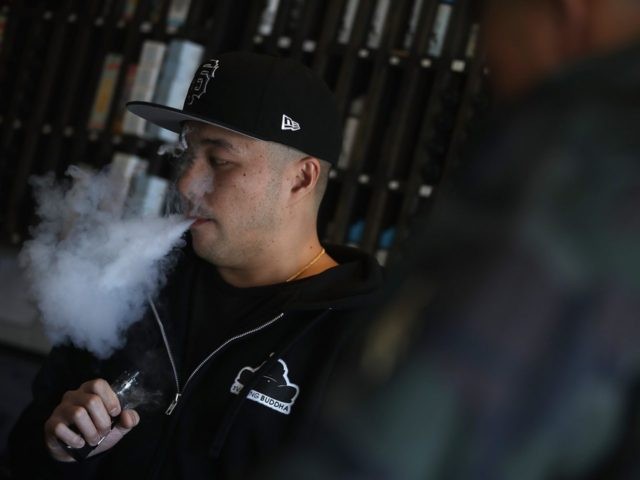The index of tobacco stocks jumped by 4.9 percent on Wednesday after Food and Drug Administration (FDA) regulators threatened to ban retail sales of “e-cigs” if manufacturers do not control their rampant use by teens.
The FDA has issued warning letters to the five major suppliers of noncombustible “electronic nicotine delivery systems” (ENDS) and 1,300 civil money penalty fines to 1,300 retailers that sold Vapes, vaporizers, vape pens, hookah pens, electronic cigarettes, and e-pipes “to minors during a nationwide, undercover blitz of brick-and-mortar and online stores this summer.”
The announcement indicated that the FDA was changing course from the prior administration’s policies, which promoted the potential of e-cigarettes to help adult smokers move away from combustible cigarettes. Yet the announcement also had the unintended consequence of improving Wall Street analysts’ views on the competitive position of traditional cigarette makers. The rise in industry stock prices was led by Altria Group, up 6.66 percent, and British American Tobacco, up 5.87 percent.
In a speech at the agency’s headquarters, FDA Commissioner Scott Gottlieb, M.D. called teen use of JUUL and other e-cigarettes a national epidemic that justified the largest coordinated enforcement effort action in the FDA’s history. Dr. Gottlieb emphasized the agency’s concern about the rise in teen use of flavored e-cigarettes: “We’re committed to the comprehensive approach to address addiction to nicotine that we announced last year. But at the same time, we see clear signs that youth use of electronic cigarettes has reached an epidemic proportion, and we must adjust certain aspects of our comprehensive strategy to stem this clear and present danger.”
The announcement also included a notice that due to new flavors driving teen e-cig use, the FDA would revisit its compliance policy to extend the dates for manufacturers of certain flavored e-cigarettes to receive premarket authorization for sale.
A University of California San Diego study published in the BNJ Journal in early 2014 found, through an extensive review of English-language websites, that there were 466 brands and 7764 unique flavors of e-cigarettes. Data revealed the over the prior 17-month period that the average net increase was 10.5 brands and 242 new flavors per month.
The FDA in 2016 finalized a rule extending its Center for Tobacco Products regulatory authority to the manufacture, parts, components, accessories, packaging, labeling, advertising, promotion, import, distribution, and sale of all electronic nicotine delivery systems that meet the definition of a tobacco product.
The FDA estimated at the time that more than 2 million high and middle school students were current users of e-cigarettes, including about 11 percent of high school and 4.3 percent of middle school students. The availability of appealing flavors such as Gummi Bear, Banana Nut Bread, and Blue Raz Cotton Candy was reported as the primary reason for use by 81 percent of student e-cigarette users.
A Dartmouth College study published in April 2018 found that some adult cigarette-smokers in the U.S. were able to quit with the help of the e-cig devices, but also that many youth who used e-cigs eventually moved on to a regular smoking habit.
BIS Research estimated in March that the “global e-cigarette and T-vapor market” would rise from $11.43 billion in 2016 to over $86.43 billion by 2025, a spectacular compounded annual growth rate of 23.25 percent.

COMMENTS
Please let us know if you're having issues with commenting.